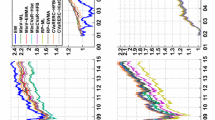Abstract.
The relation between coherent risk measures, valuation bounds, and certain classes of portfolio optimization problems is established. One of the key results is that coherent risk measures are essentially equivalent to generalized arbitrage bounds, named “good deal bounds” by Cerny and Hodges (1999). The results are economically general in the sense that they work for any cash stream spaces, be it in dynamic trading settings, one-step models, or deterministic cash streams. They are also mathematically general as they work in (possibly infinite-dimensional) linear spaces.
The valuation theory presented seems to fill a gap between arbitrage valuation on the one hand and utility maximization (or equilibrium theory) on the other hand. “Coherent” valuation bounds strike a balance in that the bounds can be sharp enough to be useful in the practice of pricing and still be generic, i.e., somewhat independent of personal preferences, in the way many coherent risk measures are somewhat generic.
Similar content being viewed by others
Author information
Authors and Affiliations
Additional information
Manuscript received: March 1999; final version received: March 2000
Rights and permissions
About this article
Cite this article
Jaschke, S., Küchler, U. Coherent risk measures and good-deal bounds. Finance Stochast 5, 181–200 (2001). https://doi.org/10.1007/PL00013530
Issue Date:
DOI: https://doi.org/10.1007/PL00013530



